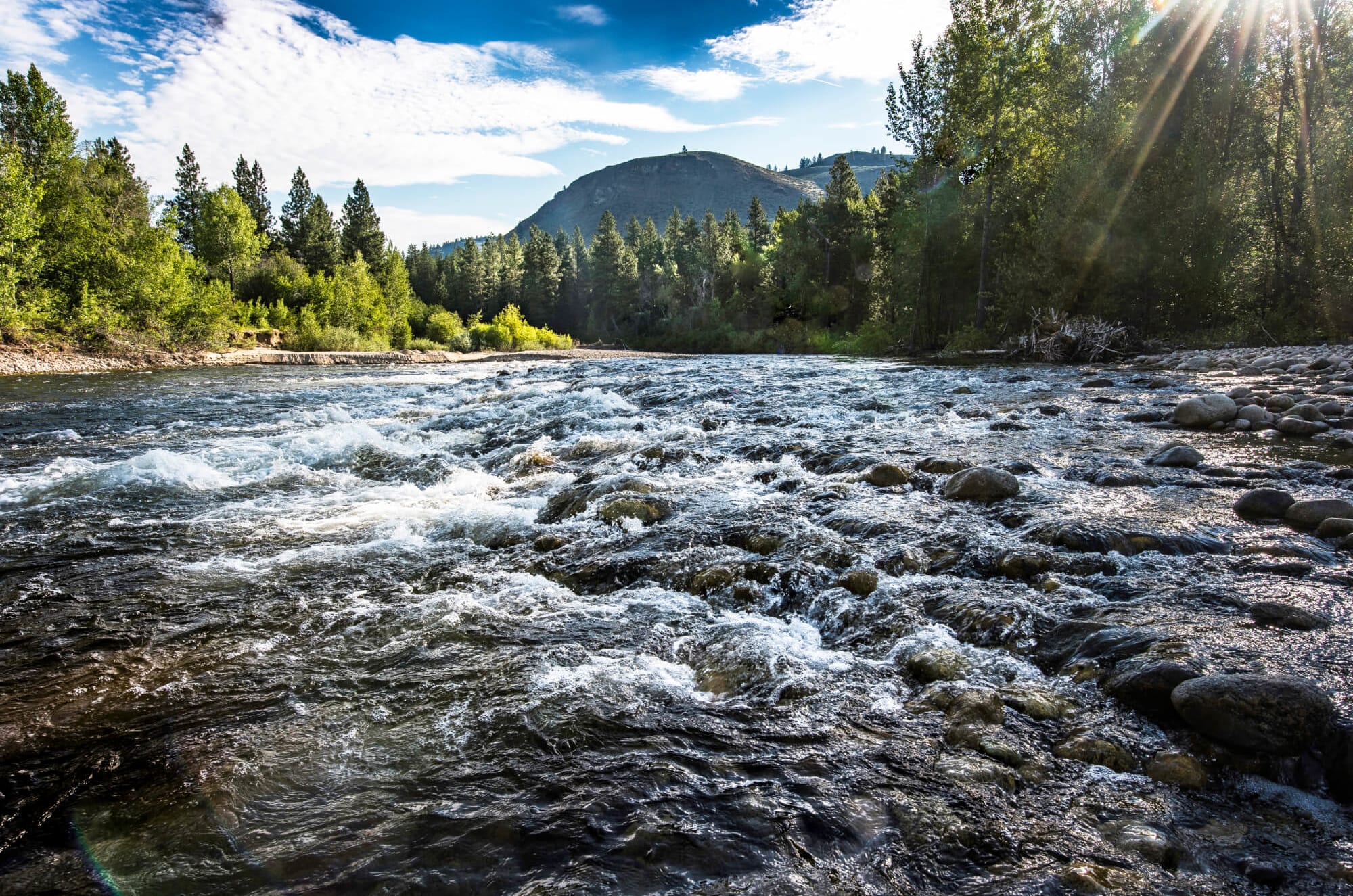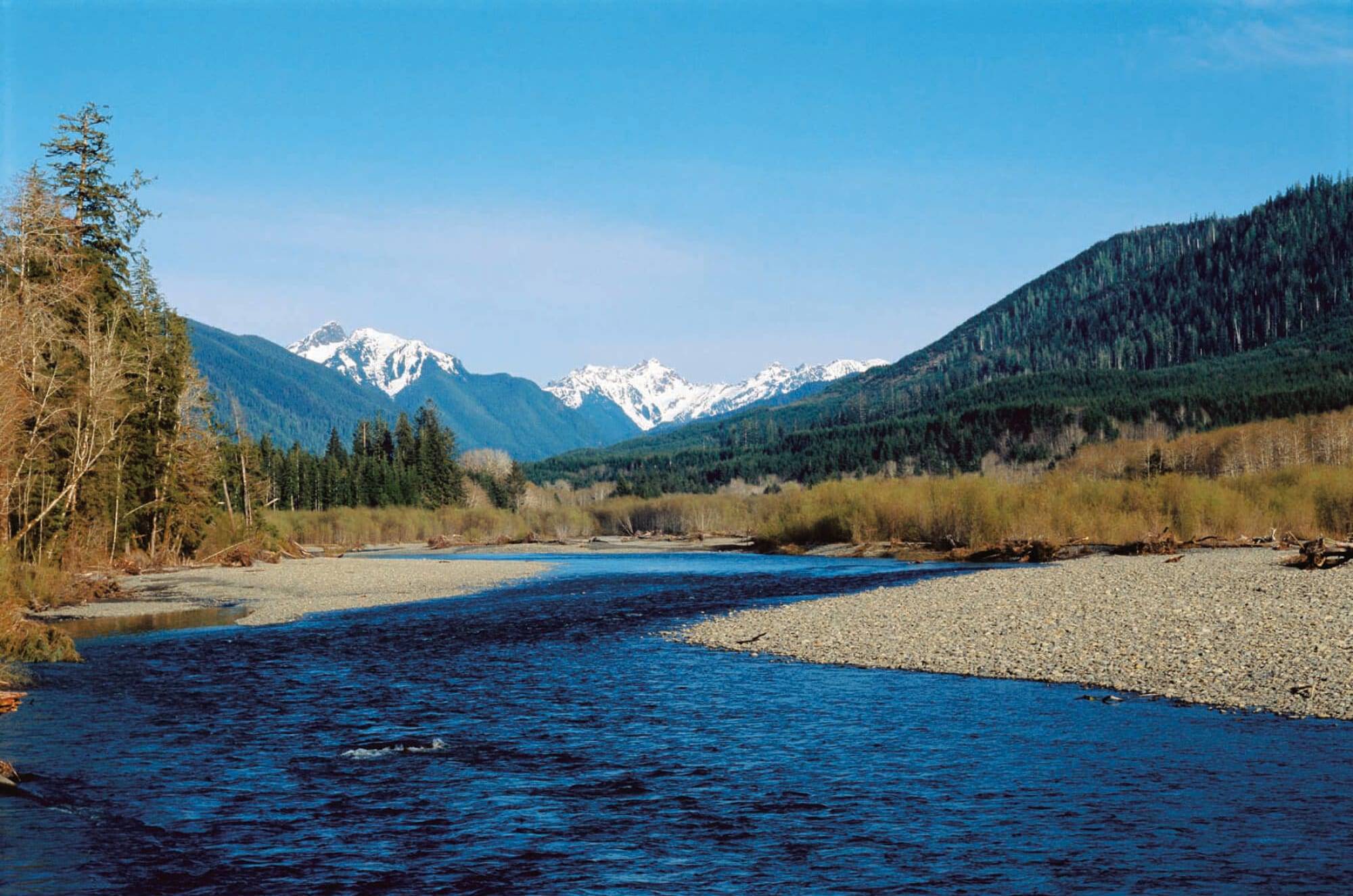Flowing from the glaciers of Mount Rainer’s southern face to the Pacific, the Nisqually River travels 78 miles, from Mount Rainier National Park to the Billy Frank Jr. Nisqually National Wildlife Refuge, at the southern tip of Puget Sound. It is one of the healthiest and least developed rivers in the area and one of the most important salmon and steelhead rivers flowing into Puget Sound. The system is home to six native salmonid species, two of them threatened. It also happens to be the only river in the country bookended by federally protected areas.
Two hydroelectric dams impede the upper river, but both fortunately lie above an existing natural fish passage barrier and therefore do not block historic spawning habitat for fish. At the river’s mouth, the Nisqually delta encompasses the largest tidal marsh restoration project in the Pacific Northwest, a massive effort to assist in the recovery of threatened Puget Sound salmon and wildlife populations. Above the delta, the river enjoys a relatively undisturbed corridor of riparian forest along 10 miles of the Joint Base Lewis-McChord military base and the Nisqually Indian Reservation.
On this lower stretch of the Nisqually, which faces immense pressure from residential growth, WRC and its partner, the Nisqually Land Trust, conserved the longest reach of unprotected, intact river frontage on the lower river. It’s a critical stretch of the Nisqually, with side channels for rearing salmon and a healthy riverside forest of black cottonwood, big leaf maple and western red cedar. Its uplands could have been developed with up to 34 homes.
The Nisqually Tribe, which has been at the forefront of salmon conservation on the river for decades, and the Nisqually Land Trust, which owns land up- and downstream of the property, have sought to conserve the property for years. In 2020, WRC was able to bring that vision to life by transferring the lands to the trust for permanent protection.
The effort conserved 172 acres and a full mile of the Nisqually River. This includes potential habitat for wildlife like northern spotted owl, marbled murrelet, pileated woodpecker and peregrine falcon. Black tail deer, Pacific giant salamander, red-legged frog, numerous bird species, beaver and river otter have all been identified on or near the property. Improving habitat within the Nisqually basin is also important to the Southern Resident orca population, which are in rapid decline due primarily to declining populations of salmon, their primary source of food. Recovering Nisqually salmon runs, especially Chinook, would greatly enhance foraging habitat for Southern Resident orcas in the Puget Sound. In a rapidly growing region that is losing fish and wildlife habitat faster than it is gaining it, this project is of crucial importance.
Conservation of this stretch of the Nisqually River was made possible with support from the James M. Lea Foundation, The Gary Milgard Family, TOTE Maritime Alaska, The Norcliffe Foundation, Hugh and Jane Ferguson Foundation and the Betlach Family Foundation.












